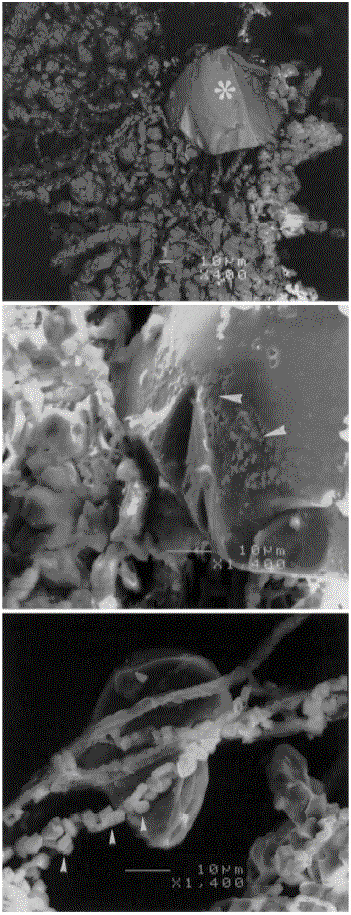
Fig. 3. SEM micrograph of rhizomorphs collected from inside a container with apatite and biotite in a laboratory experiment. Top: an overview of the rhizomorph, which is covered by Ca oxalate crystals and an embedded apatite particle (*), is seen to the right. Middle: close up view of the apatite particle which shows signs of erosion of the surface (arrowheads). Bottom: close up view of fungal hyphae covered by calcium oxalate crystals (arrowheads).
図3.実験室での実験でアパタイトと黒雲母を含む容器内から採取された根状菌糸束のSEM写真。上:根状菌糸束の概観で、Caシュウ酸塩結晶に覆われており、また右側に取り囲まれたアパタイト粒子(*)が見える。中:表面に浸食の兆しを示すアパタイト粒子の拡大像(矢じり印)。下:シュウ酸カルシウム結晶に覆われた菌糸の拡大像(矢じり印)。
〔『Wallander,H., Johansson,L. and Pallon,J.(2002): PIXE analysis to estimate the elemental composition of ectomycorrhizal rhizomorphs grown in contact with different minerals in forest soil. FEMS Microbiology Ecology, 39, 147-156.』から〕